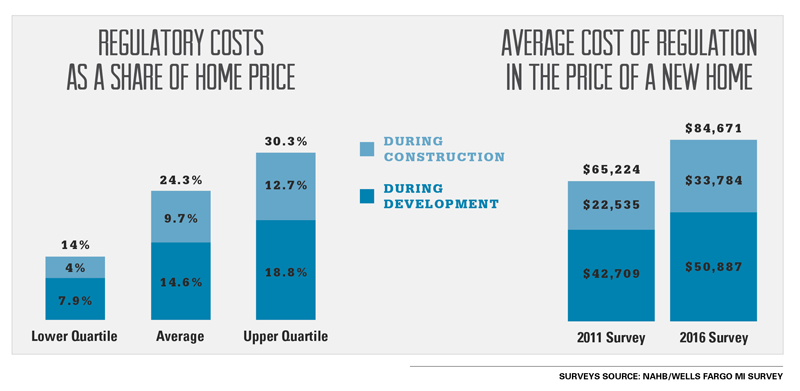Regulation: 24.3% of the Average New Home Price

A new NAHB study shows that, on average, regulations imposed by government at all levels account for 24.3 percent of the final price of a new single-family home built for sale. Three-fifths of this—14.6 percent of the final house price—is due to a higher price for a finished lot resulting from regulations imposed during the lot’s development. The other two-fifths—9.7 percent of the house price—is the result of costs incurred by the builder after purchasing the finished lot.
NAHB’s previous 2011 estimates were fairly similar, showing that regulation on average accounted for a quarter of a home’s price. However, the price of new homes increased substantially in the interim. Applying percentages from NAHB’s studies to Census data on new home prices produces an estimate that regulatory costs in an average home built for sale went from $65,224 to $84,671—a 29.8 percent increase during the roughly five-year span between NAHB’s 2011 and 2016 estimates.
In comparison, during that time, disposable income per capita in the U.S. increased by 14.4 percent. In other words, the cost of regulation in the price of a new home is rising more than twice as fast as the average American’s ability to pay for it.
The above estimates are based largely on questions included in the survey for the March 2016 NAHB/Wells Fargo Housing Market Index, combined with long-run assumptions about average construction times, interest rates, profit margins, etc.
